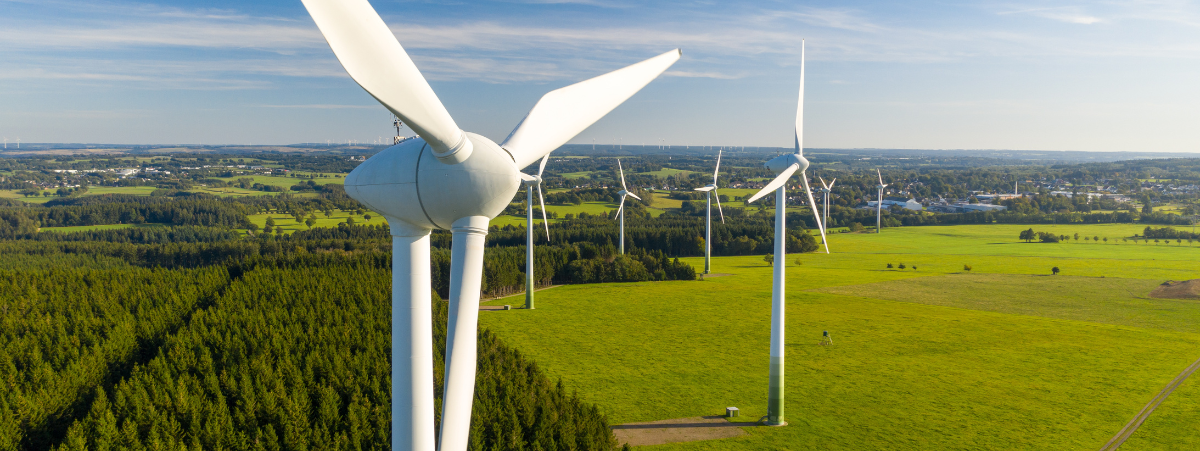In the fight against climate change, carbon sequestration is a key concept. This article explains what this expression means exactly, and what the different types of carbon sequestration are.
The link between carbon emissions and global warming is long established, and we know that in order to meet the goals of the Paris Agreement and keep the global temperature rise below 1.5ºC, we must reduce our emissions. This means changing our processes, switching to green electricity and reducing our energy consumption first and foremost. But we are lucky to also get help from a phenomenon that has already been happening on this planet for millenia: carbon sequestration.
Carbon sequestration definition
The Encyclopedia Britannica defines carbon sequestration as “the long-term storage of carbon in plants, soils, geologic formations, and the ocean”. Carbon sequestration is a natural phenomenon: plants, for instance, need carbon dioxide to live. They absorb it from the air in order to grow.
Humans can influence this phenomenon, both in good and bad ways. Global deforestation and intensive farming have diminished carbon absorption from plants and soils. But humans are also capable of inventing new strategies and technologies to sequester more carbon, helping to bring our world to net zero emissions.
Types of carbon sequestration
As mentioned above, carbon sequestration happens both naturally and as a result of human activity. But it can also be broken down into several categories, depending on where and how CO2 is absorbed.
Biosequestration
When carbon dioxide is absorbed by natural ecosystems, the process is called biosequestration. It can take place both naturally and with a little helping hand from humans.
Natural sequestration
Carbon is constantly being absorbed by nature. Peatlands, forests and wetlands are well known for their absorption capacity. Worldwide, there are over 3 million square kilometers of natural peatlands, and they sequester 0.37 gigatons of CO2 a year. Their soils contain more than 600 gigatons of carbon (up to 44% of all soil carbon): this is more carbon storage than any other type of vegetation.
On the other hand, the most productive forests can sequester up to 11 tons of CO2 per hectare per year. Globally, forests are storing about 400 gigatons of carbon, with tropical forests sequestering more than those in cold climates.
Carbon farming
Carbon farming, regenerative agriculture or even agroforestry are all terms that refer to the implementation of agricultural practices that increase the potential for carbon sequestration within food production.
These practices include planting without tilling and rotating crops, cover crops and livestock to promote better soil health. They require drastic changes from conventional farming, which depletes the soil and leads to its desertification.
Regenerative agriculture is increasingly seen as an important part of the climate solution, and governments around the world are now developing carbon farming regulation.
Carbon capture and storage
Aside from the natural processes that store carbon, it is also possible to capture CO2 emissions from a source (typically, industrial production) and store it “manually” in a variety of places. It generally involves what is called a carbon capture and storage (CCS) device.
Geological sequestration
The Earth is full of underground holes, created by natural geological processes, mining or oil and gas extraction. Now, scientists are using these holes to store carbon after capturing it. This sounds simple, but it involves a complicated process: CO2 must be compressed to about 100 bar to turn it into a supercritical fluid. In this form, it can be transported via pipeline to the place of storage and injected deep underground, typically around 1 km, where it remains stable for millenia. It is estimated that up to 90% of carbon emissions from the industrial use of fossil fuels could be captured by CCS, some of it stored in this way.
Seaweed sequestration
Another sequestration technique involves seaweed, an aquatic plant that has high carbon absorption capacity. It is estimated that the seaweed growing naturally in the Earth’s oceans is currently sequestering 173 million tons of CO2 per year, with a rate of 50 tons or more per hectare. As a result, several companies are starting to farm seaweed, but it is also possible to use seaweed in CCS devices like BioUrban, the ‘tree of the future’ commercialized by ClimateTrade.
Chemical sequestration (construction materials)
Finally, scientists have also developed another type of carbon sequestration through a chemical process called mineral carbonation. Based on the reaction of CO2 with metal oxide bearing materials (typically calcium and magnesium) to form insoluble carbonates, it allows the sequestration of carbon in industrial materials including cement. Several startups are now producing cement and concrete for construction, injecting it with captured CO2. This technique shows great promise to decarbonize the construction sector.
Carbon sequestration vs. carbon removal
Carbon removal is another sustainability buzzword, and while the two concepts are similar, they are not exactly the same. Carbon removal, also called carbon drawdown, is the process of capturing CO2 from the atmosphere and storing it in plants, soils, oceans, rocks, underground holes, or long-lived products like cement. Under this definition, carbon removal includes biosequestration from forests, carbon farming or even seaweed farming. However, it doesn’t include carbon capture and storage (CCS), whereby carbon is captured at the source and never enters the atmosphere.








